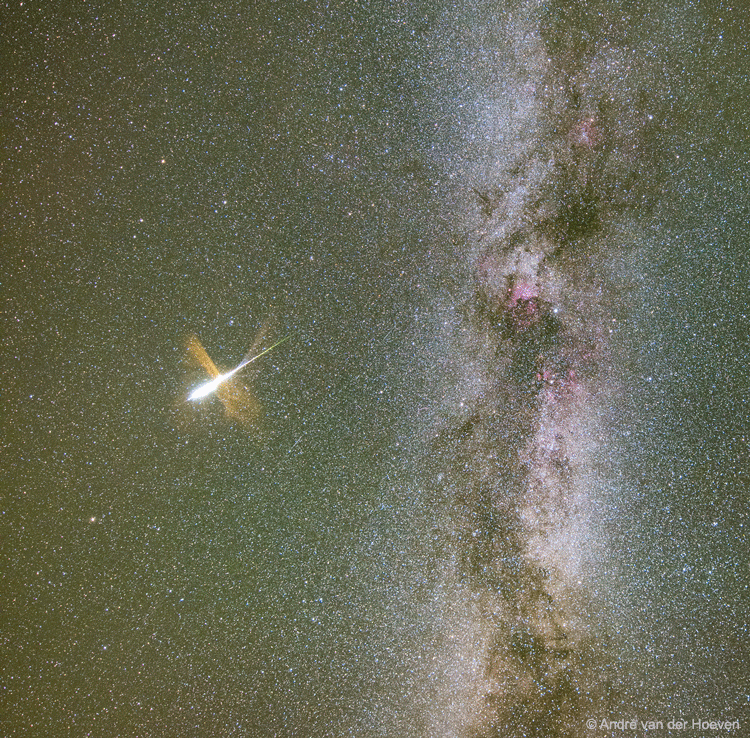Credit & Copyright: AndrИ van der Hoeven
Explanation:
Next weekend the
Perseid Meteor Shower reaches its maximum.
Grains of icy rock will
streak across the sky
as they evaporate during entry into
Earth's atmosphere.
These grains were shed from
Comet Swift-Tuttle.
The Perseids result from the annual crossing of the Earth
through
Comet Swift-Tuttle's orbit, and are
typically the most active
meteor shower of the year.
Although it is hard to predict the level of activity in
any meteor shower, in a clear dark sky an observer might see a
meteor a minute.
This year's
Perseids
peak nearly a week after
full Moon,
and so some faint meteors will be lost to the lunar skyglow.
Meteor showers in general are best be seen from a relaxing position, away from lights.
Featured here
is a meteor caught
exploding during the 2015
Perseids above
Austria
next to the central band of our
Milky Way Galaxy.
Follow APOD on:
Facebook,
Google Plus,
Instagram, or
Twitter
1999 2000 2001 2002 2003 2004 2005 2006 2007 2008 2009 2010 2011 2012 2013 2014 2015 2016 2017 2018 2019 2020 2021 2022 2023 2024 2025 |
Январь Февраль Март Апрель Май Июнь Июль Август Сентябрь Октябрь Ноябрь Декабрь |
NASA Web Site Statements, Warnings, and Disclaimers
NASA Official: Jay Norris. Specific rights apply.
A service of: LHEA at NASA / GSFC
& Michigan Tech. U.
|
Публикации с ключевыми словами:
Perseids - Персеиды
Публикации со словами: Perseids - Персеиды | |
См. также:
Все публикации на ту же тему >> | |
